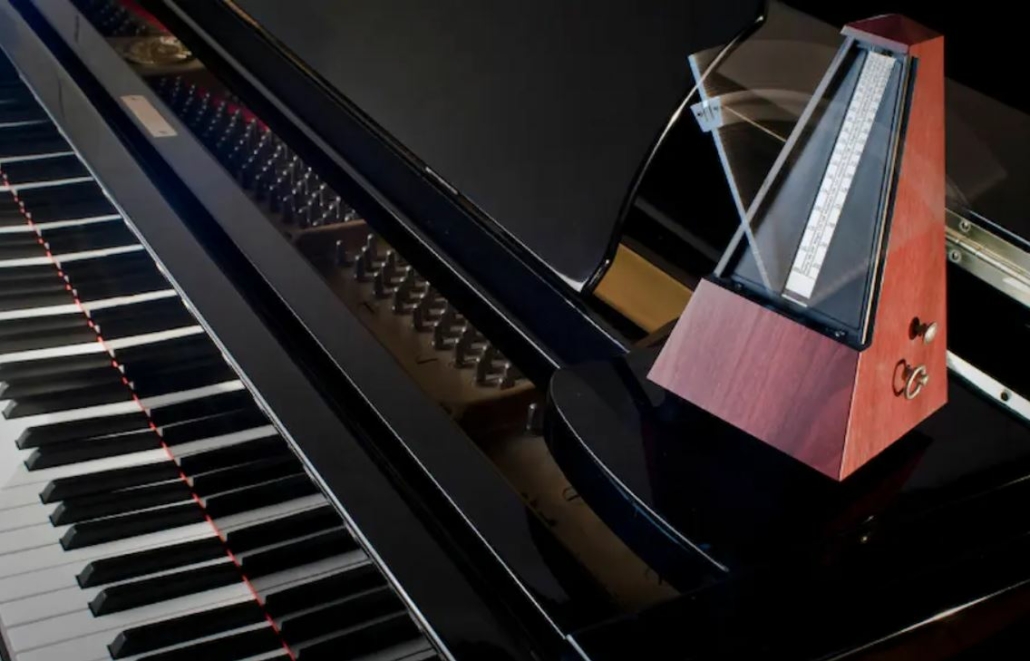7 Easiest Ways to Improve Your Piano Playing Technique for Beginners
The piano with its melodious and emotive tones, always captivates music enthusiasts. However, mastering this instrument demands effort, persistence, and systematic training. Understanding this, Pianosintheparks.com suggests 7 easy and effective ways to enhance your piano playing technique.
See More:
- Benefits of Playing Piano
- How Many Piano Keys Are On A Piano?
- Top 4 Piano App for Free
- How to tune the piano?
- Guide to Controlling Humidity for Pianos
1. Master Fundamental Piano Knowledge
To develop a solid piano playing technique, you need to start with the basics. Understanding how to read music and grasp the fundamentals of piano theory are crucial for any aspiring pianist.
- Chords and Notes: Understand chords, note names, and their time values.
- Scales: Comprehend the structure of musical scales, types of chords, and their application in music.
- Rhythm: Master basic rhythms and accurate beat counting.
With foundational piano knowledge, you can read music easily, play the piano in the correct rhythm, and fully appreciate the melody.
2. Get A Proper Hand Placement
The foundation of a good piano playing technique starts with a correct piano hand placement. Proper hand placement ensures your fingers move with precision and reduces the risk of strain or injury. When your hand position is correct, you’ll have better control over dynamics (softness and loudness) and articulation (the clarity of notes). This means you can play longer without fatigue and maintain good posture, both of which are crucial for longevity at the piano.
How to Place Your Hands Properly:
- Your fingers should gently curve, resting on the keys like claws gripping a ball.
- Keep your wrists level and relaxed, avoiding any stiffness.
- Position your elbows so they are slightly above the keyboard.
With a proper hand position on piano keyboard, your fingers will move more freely, allowing you to handle faster, more complex music passages with ease.

3. Master Proper Hand Position
Besides hand placement, mastering your piano hand position is vital for your overall technique. Good hand position allows you to distribute force evenly across all fingers, which is vital when playing chords or sequences that involve many notes. With improper hand position, your fingers may struggle to hit the right keys or maintain a consistent sound.
Improving Your Hand Position:
- Make sure your thumb moves smoothly under your fingers during scales and arpeggios. This technique is called “thumb-under,” and it’s critical for fluid motion.
- Avoid locking your joints—keeping them flexible ensures smooth transitions from key to key.
- Maintain contact with the keys at all times, as this will help create smoother, more connected phrases.
4. Mastering Finger Independence with Piano Finger Techniques
Developing finger independence is one of the biggest challenges for beginners. Some fingers, like the fourth and fifth, are naturally weaker than others, but with the right piano finger techniques, you can strengthen all your fingers and play more intricate music easily.
Techniques to Build Finger Independence:
- Scales and Arpeggios: These exercises are fundamental to any pianist’s routine. Practice playing them slowly at first, gradually increasing your speed. Ensure that each finger presses the keys with equal force and clarity.
- Hanón Exercises: These are a series of finger exercises designed specifically to develop strength and dexterity. Including these in your daily routine will improve finger independence over time.
- Trills and Finger Swapping: Practice playing trills (quick alternation between two notes) and swapping fingers on the same note to challenge your dexterity.
By focusing on these piano finger techniques, you’ll develop better finger independence and control, which are essential for advancing your piano playing technique.
5. Practice of Scales and Arpeggios
Scales and arpeggios are not just finger exercises—they are the foundation of classical and modern piano playing. Practicing scales improves finger agility, hand coordination, and muscle memory. Arpeggios, which break chords into individual notes, teach you to move your hand smoothly across wide intervals on the keyboard.
When practicing scales and arpeggios:
- Play them with both hands to develop coordination.
- Use a metronome to keep a steady rhythm.
- Gradually increase speed while maintaining accuracy.
Good hand position on the piano keyboard is critical during these exercises. Keep your wrists loose and avoid lifting your fingers too high. The smoother your hand transitions, the better your scales and arpeggios will sound.
6. Listen Carefully
Rhythm is essential to making any piece of music feel alive. Without proper rhythm, even the most beautifully played notes can sound disjointed. Therefore, you should pay close attention to the sound you’re producing. Are your notes clear and in tune? Are your dynamics varied? Listening critically will help you identify areas for improvement and make your rhythm better.
How to Improve Your Rhythm:
- Divide difficult sections into smaller parts and practice them gradually.
- Clap the rhythm before playing it to internalize the timing.
- Gradually increase the speed of difficult passages once you’re comfortable.
7. Use a Metronome
A metronome is an effective tool for maintaining consistent rhythm, especially important for playing pieces with complex rhythms. Regular use of a metronome helps you:
- Develop rhythm: Feel and maintain accurate rhythm, playing the piano in sync with the beat.
- Boost confidence: When you maintain a good rhythm, you’ll feel more confident playing and showcasing your skills.
- Enhance professionalism: Using a metronome is a habit of professional piano players, helping you play piano more systematically and professionally.
Including a metronome in your practice routine will greatly enhance your piano playing technique and ensure that your pieces sound more polished and professional.

Conclusion
Improving your piano playing technique is a journey, not a destination. By following these tips and practicing consistently, you can achieve your musical goals and enjoy the process of learning and growing as a musician. Most importantly, enjoy the process and the joy that comes from making beautiful music!




Leave a Reply
Want to join the discussion?Feel free to contribute!